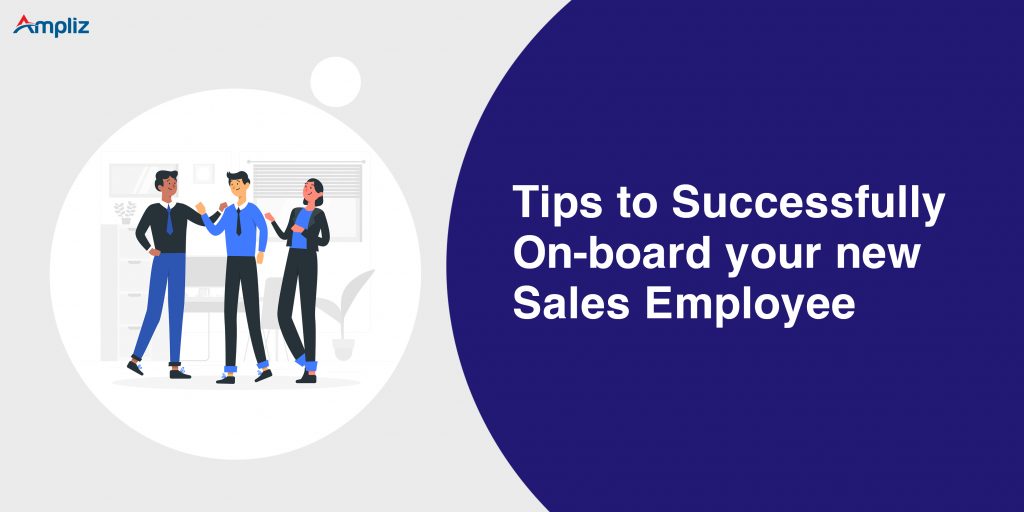Onboarding members of your sales team can be crucial in their subsequent performance and productivity, and this is what makes sales onboarding all the more important. When the onboarding is done right, the team as well as the organization can expect significant benefits, that is otherwise not possible.
Right from setting the right level of motivation and enthusiasm, to building a culture of consistency, having your sales team members onboarded is something that every organization must prioritize.
This is especially valuable during times like this, when telecommuting or remote working comes into play and you have each team member working individually, outside the office set up.
With Cyber Monday and Black Friday fast approaching, you want to make sure you do everything you can to boost sales and get the team performing at their best, in order to make the most of the holiday season. Yes, the holiday season needs sales teams to pull up their socks and bring their best to the table, but with effective onboarding, you can make sure that no member if your team feels overwhelmed or burdened by the pressure.
There a lot of onboarding checklists and templates that you can consult online, but when it comes to sales, you may want to bear in mind a few things and tweak the templates to suit your needs better. To help you design a better sales onboarding process, here are a few simple but realistic tips that aim to empower your team better:
1. The devil is in the granular details
A lot of the times companies misunderstand onboarding as a generic introduction that is given to new hires of all that happens within the team and in the organization. This is an extremely myopic view of sales onboarding, especially, because of the number of variables involved.
Every organization has a different approach towards sales, every manager has a different strategy to get things moving and it is possible that these strategies change quarter on quarter to adapt to the needs of the company. Giving a generic overview of what happens in the team not only kills the enthusiasm but also prevents the team from being on the same page.
This is why it is crucial that all sales onboarding processes include every little detail as to how the team typically goes about their operations. This includes taking an ultra-nuanced, almost microscopic look at the qualification criteria, what makes a lead “good”, what makes a lead “bad”, the key phrases you should include while talking to specific personas or industries, the conversation drivers that only apply to your industry, how to crack the discovery call, how to engage with prospects, the best response to questions that include comparisons to competitors, and such.
This is even more true considering how every new individual is different. They have different learning capabilities and social skills which may play a role in their approach to
There are so many nuances that employees who have been around for a while can share with the new hires. Getting these formally included in the sales onboarding process can cut down the “shadow” time drastically.
2. Introduce the ‘Buddy’ system
For those of you who may not be familiar with it, the buddy system is basically having the new hire mentored by a senior team member for a certain duration before they get cracking. The idea, of course, is to have the new employee watch how the senior team members go about tackling situations, how they manage their time, what to expect typically from a day, how to negotiate the unexpected developments, and basically just live vicariously through the mentor, until they are ready to take it up on their own.
Different companies have different timelines and can rage anywhere between a week to a month. This is also known as ‘shadowing’ in certain organizations where the new hire follows the mentor around like a shadow, soaking in all that they can like a sponge!
The buddy system can work wonders for several reasons.
- It can help introverted new hires feel less overwhelmed at the thought of having to integrate into the new team, the new office, etc.
- It helps develop a rapport within the team as you learn the tricks of the trade from just watching the mentor go about their daily tasks
- It also helps the team leads get a better understanding of how proactive the new hire is or not, and get the mentor to break the ice
3. End-to-End Exposure
Another huge mistake that most companies make is to present the new hires with insufficient exposure into how the sales cycle works, with respect to their organization or industry. Understanding the sales cycle right from the start is essential because then the mindset isn’t just to move from one stage to another. Knowing how the sales cycle typically works helps new employees understand the larger picture and make decisions accordingly.
The new hire must be made to understand the entire sales cycle process – from lead generation to lead creation, the different lead sources, how it is qualified as an opportunity, the handoff criteria involved, the nuances of inbound versus outbound and what each team does, the definition of qualification criteria, the parameters of negotiations – Every single aspect needs to be experienced first-hand for the new employee to really get integrated into the system. Don’t just create a sales playbook for the sake of creating one. You need to also specify the ideal time that a lead should be in each stage.
The biggest sin you can commit when dealing with sales onboarding is to think that the sales cycle ends with the closure. Onboarding and implementation are also very much part of the sales cycle even though it is the CS team that takes care of it. That is end-to-end sales cycle exposure, and it is paramount to make sure that the new hires understand how those aspects are carried out as well.
4. Leverage technology to empower your employees
Empowering your sales team with the right set of tools can transform not only their performance but also your bottom-line. Considering how every minute is of immense value to the sales team especially, it is important to invest in tech solutions that automate mundane tasks that eat up their time.
One wise tech investment would be to invest in a Digital Adoption Platform that will not only empower your new sales employees with their onboarding but also with continuous learning when it comes to software. The more tools you invest in, the higher the chances of your employees getting overwhelmed.
Here are some key ways in which a DAP could helps improve the performance and productivity of your sales teams:
- A DAP helps them navigate any enterprise software with ease, so they don’t have to spend any extra time on training.
- You could also leverage the DAP to communicate important announcements or updates to your employees, avoiding the possibility of it getting lost in their inbox!
- It also helps you understand where your sales team struggles the most when it comes to tech usage and address them effectively with on-screen guidance.
- From HR portals to log in their time to job-related software that they use every working minute of their day, employees need to be fluent in multiple software that may not necessarily be easy for everyone. This is where a DAP comes in handy as it sits atop any web-based application like a guiding force, helping users learn to use and adapt all these tech solutions effectively.
From understanding their team members, to gathering intel on your competition; from working their way through the initial formalities to learning to use the software; from picking up all the tricks of the trade to unlearning some other tricks that may not be helpful to the new team, a new employee goes through a tonne of adjustments in the first few months.
Having a sound onboarding plan for your new sales team members makes it easier for them to integrate with the culture and processes that you have in place as well as helps you improve employee retention and engagement.
Author bio: Divya Bhat works at Apty as the Marketing Generalist & Content Strategist and has years of experience in Customer and Employee Experience. She loves reading about all things Technology and writing about how it can help make lives easier. With her journalistic background and penchant for languages, her curiosity to learn is ever-evolving.
Wanna write for us? Mail us your idea to [email protected]



